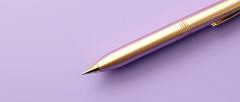
The Ultimate Guide to Direct-to-Film Printing: Maximize Your Custom Apparel Business
Table of Contents
- Key Highlights:
- Introduction
- What is Direct-to-Film Printing?
- The DTF Printing Process
- Direct-to-Film Printing vs. Other Printing Methods
- Pros and Cons of Direct-to-Film Printing
- Direct-to-Film Printing FAQ
- Conclusion
Key Highlights:
- Definition & Process: Direct-to-film (DTF) printing is a heat transfer method involving printing designs on special PET film, making it suitable for vibrant colors on various fabrics.
- Comparison with Other Methods: DTF printing stands out for its versatility and cost-effectiveness for smaller orders compared to techniques like screen printing and sublimation.
- Pros & Cons: While it offers quick setup and durability, DTF printing does come with challenges, including adhesive management and equipment maintenance.
Introduction
In the dynamic world of custom apparel design, the choice of printing technology can significantly impact product quality, turnaround time, and ultimately, business success. With the growing demand for personalized clothing, designers must navigate various printing processes to find the most suitable option for their needs. Among these methods, direct-to-film (DTF) printing has gained popularity due to its versatility, professional results, and ability to efficiently produce high-quality garments, even in small batches. This comprehensive guide will explore DTF printing, its advantages and disadvantages, and how it compares to other prominent methods in the custom apparel industry, providing you with the knowledge to enhance your business's printing capabilities.
What is Direct-to-Film Printing?
Direct-to-film printing, commonly abbreviated as DTF, is a relatively new heat transfer printing method that offers a unique approach to apparel decoration. The process begins with creating a design that is printed onto a specially treated polyethylene terephthalate (PET) film. This film has a white ink base and is coated with an adhesive powder that activates under heat and pressure, allowing the design to bond permanently to the fabric.
The appeal of DTF printing lies in its ability to print vibrant colors and intricate designs onto both light and dark fabrics without the limitations imposed by other printing methods. Because the white ink serves as a foundation layer, colors can appear bold and vivid, maintaining their integrity even after multiple washes. Its cost-effectiveness, especially for small- to medium-sized orders, makes it a favored choice among custom apparel designers and businesses.
The DTF Printing Process
Understanding the steps involved in the DTF printing process is crucial for anyone considering this technology for their custom apparel line. The following outlines the primary steps involved:
-
Prepare the Design: The first step is to import your digital design into Raster Image Processing (RIP) software, such as Onyx or EFI Fiery. This software helps prepare the image, ensuring it is correctly formatted for printing.
-
Print on PET Film: The design is printed onto the PET film using a specially designed DTF printer that utilizes CMYK (cyan, magenta, yellow, key/black) inks along with white ink to create a visually appealing print.
-
Apply Adhesive Powder: After printing, the still-wet ink on the film is evenly covered with adhesive powder, which will later help bond the design to the fabric during the heat transfer.
-
Cure the Film: The printed film is then placed in a curing oven, where heat is used to melt the adhesive powder, priming it for the transfer process.
-
Transfer the Design: The next step involves placing the cured film onto the desired garment and utilizing a heat press to transfer the design. The heat and pressure activate the adhesive, causing it to bond permanently to the fabric.
-
Peel Off the Film: Once the garment has cooled, the film is carefully removed, revealing the finished print.
Each step in the DTF printing process is designed to maximize efficiency and produce high-quality results, making it an attractive option for apparel designers.
Direct-to-Film Printing vs. Other Printing Methods
There are several other printing techniques available for custom apparel production, each with its unique traits, advantages, and disadvantages. Understanding how DTF printing stacks up against these methods is essential for decision-making.
Direct-to-Film Printing vs. Screen Printing
Screen printing has long been a staple in the printing industry, using screens as stencils for each color in a design. While this method is excellent for bulk orders and can produce vibrant prints, it does have limitations. Each color requires a separate screen, which can become cumbersome for complex designs that require blending or multiple colors. DTF printing, on the other hand, handles any number of colors with ease, ensuring that applications are even across the fabric without the need for multiple setups.
Despite DTF's versatility, screen printing remains more cost-effective for larger runs, typically exceeding 100 items. When mass production is at play, many businesses still lean towards screen printing due to the economy of scale.
Direct-to-Film Printing vs. Sublimation Printing
Sublimation printing employs heat and pressure to convert dye into gas, which then permanently bonds with polyester fabric fibers. While this method offers a high degree of durability and vibrant colors, it is limited to polyester-based materials, making it unsuitable for cotton or mixed-fabric applications. DTF printing overcomes this limitation, allowing for design applications on a wider variety of materials, including cotton, denim, and silk. This broader compatibility grants custom apparel businesses greater flexibility in product offerings.
Direct-to-Film Printing vs. Direct-to-Garment Printing
Direct-to-garment (DTG) printing is another popular technique, applying ink directly onto the fabric much like a conventional printer does on paper. This technique excels when printing on 100% cotton garments but often requires pre-treatment to maintain color vibrancy and adherence. Unlike DTG, which requires careful fabric selection, DTF printing allows for prints that are both vibrant and enduring on various fabric types, including those that DTG might not support effectively.
While DTG printing may be more environmentally conscious, utilizing water-based inks, DTF printing presents an opportunity for consistent prints that remain vibrant across a diverse range of textiles.
Pros and Cons of Direct-to-Film Printing
Like any printing method, DTF printing has its distinct advantages and drawbacks. A thorough evaluation can help designers weigh whether it is the right choice for their custom apparel endeavors.
Pros
-
Versatility: DTF printing is compatible with numerous fabrics, including cotton, polyester, nylon, silk, and various textile blends. This flexibility allows businesses to cater to a wider customer base.
-
Quick Setup: Unlike processes such as DTG and screen printing that require intricate setup steps, DTF printing offers a much quicker startup time, making it suitable for businesses with fluctuating demand.
-
Print Quality: DTF produces vibrant, eye-catching prints that maintain their quality - even on dark garments. The efficacy of white ink underpins its capability to create sharp designs.
-
Durability: DTF prints withstand frequent washing without losing fidelity, providing a long-lasting product that customers will appreciate.
-
Cost-Effectiveness: For smaller orders (generally under 100 items), DTF printing can be more economically viable than other methods, as it reduces setup and material costs.
Cons
-
Handling of Adhesive Powders: The use of adhesive powders can potentially create messes and operational issues if not managed correctly. This adds an extra layer of complexity to the DTF printing process.
-
Specialized Materials: The requirement for specific films and adhesive powders can lead to increased setup costs when compared to traditional screen printing or DTG options.
-
Fume Ventilation Needs: The heating processes involved can release fumes from adhesive powders, necessitating proper ventilation during operation to maintain a safe workspace.
-
Texture and Feel: The resulting print often has a firmer texture compared to prints made with methods like sublimation, which may be a consideration for some customers.
-
Environmental Considerations: The PET films and adhesive powders used in DTF printing are non-biodegradable, which may dissuade eco-conscious consumers from choosing this method.
-
Maintenance and Technical Expertise: DTF printers, heat presses, and associated equipment require regular maintenance to function optimally and avoid potential technical issues, such as clogged nozzles.
Direct-to-Film Printing FAQ
Is direct-to-film printing good quality?
Yes, DTF printing produces high-quality designs that boast durability. The use of robust, long-lasting inks ensures that prints hold up well over time, even after extensive washing. The white base effectively enhances colors, providing an impressive aesthetic appeal, especially on darker garments.
What does direct-to-film print mean?
Direct-to-film printing refers to a specific heat transfer printing process where designs are printed on a DTF transfer film, covered with adhesive, and then transferred to a garment using heat and pressure. Unlike sublimation or direct-to-garment printing, where the ink penetrates the fabric, DTF printing places the ink on the fabric's surface.
How much does direct-to-film printing cost?
The cost of DTF printing can vary greatly based on multiple factors, including order size, design complexity, and whether the printing is done in-house or outsourced to a service provider. On average, small batch prints typically range from $1 to $5 per garment.
Conclusion
In the bustling realm of custom apparel, direct-to-film printing has carved out a secure niche, appealing to designers and businesses looking for quality, versatility, and efficiency in a competitive market. By understanding the fundamentals of this printing technology and comparing it with other available methods, designers can make informed decisions when choosing the right techniques to propel their businesses forward. As the demand for unique, custom garments continues to rise, DTF printing stands poised to play a vital role in shaping the future of apparel design.
POWER your ecommerce with our weekly insights and updates!
Stay aligned on what's happening in the commerce world
Email Address
Handpicked for You

22 August 2025 / Blog
Navigating Customer Experience Trends: Strategies for 2024 and Beyond
Read more
22 August 2025 / Blog
Maximizing Efficiency: A Comprehensive Guide to Customer Service Outsourcing
Read more
22 August 2025 / Blog


